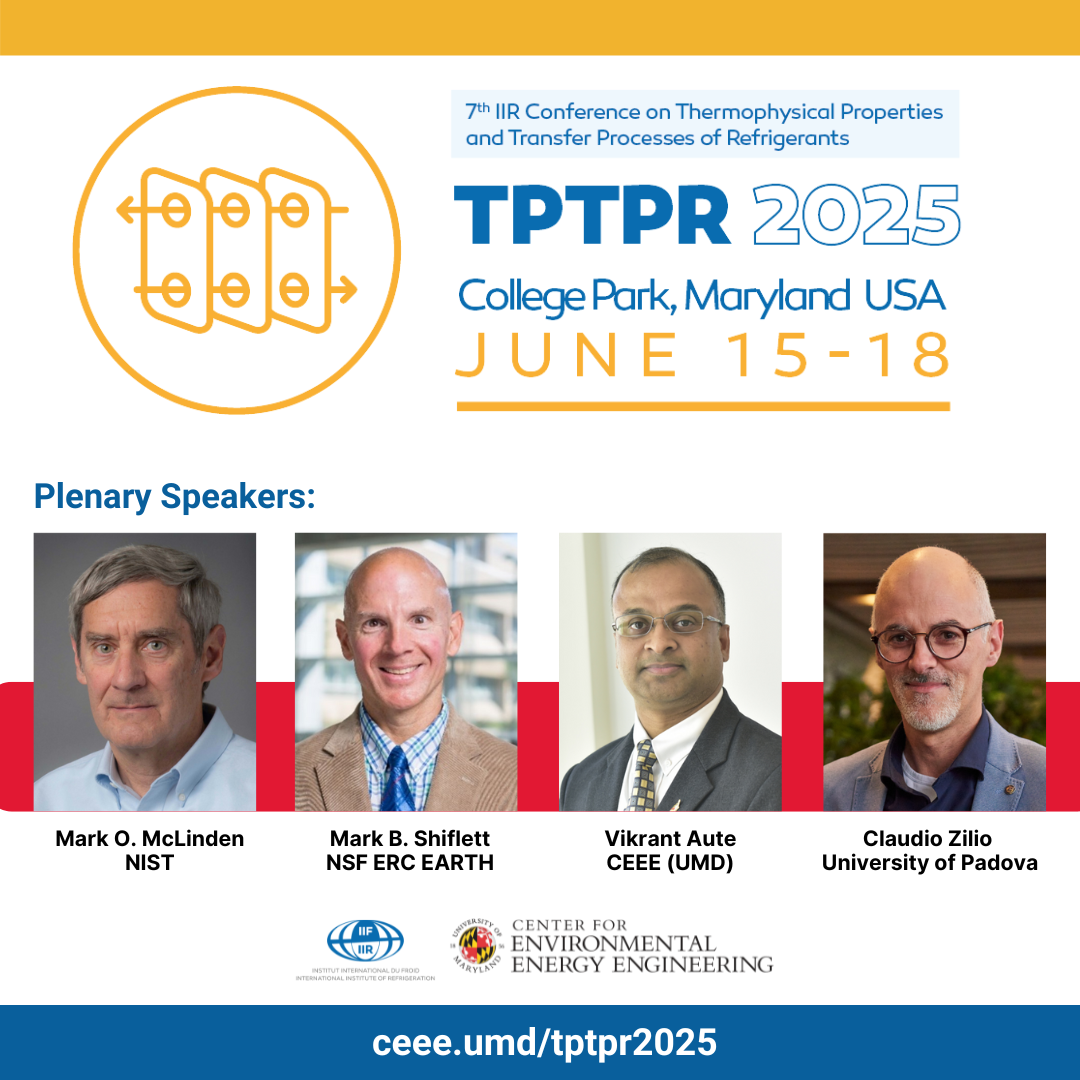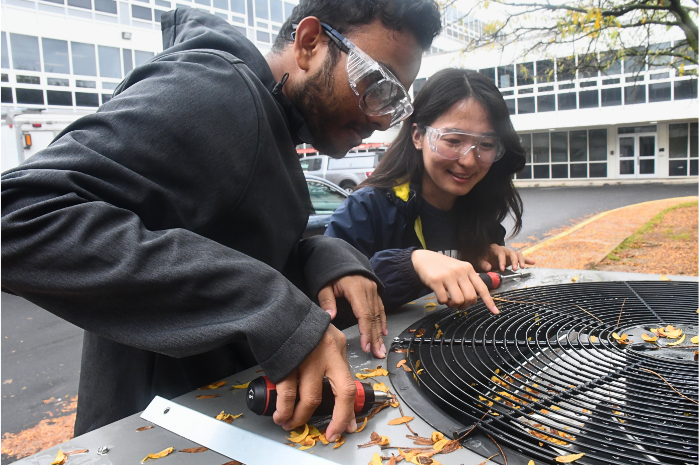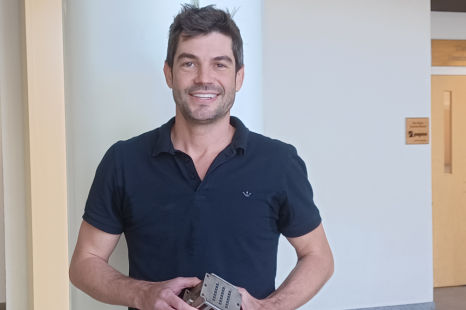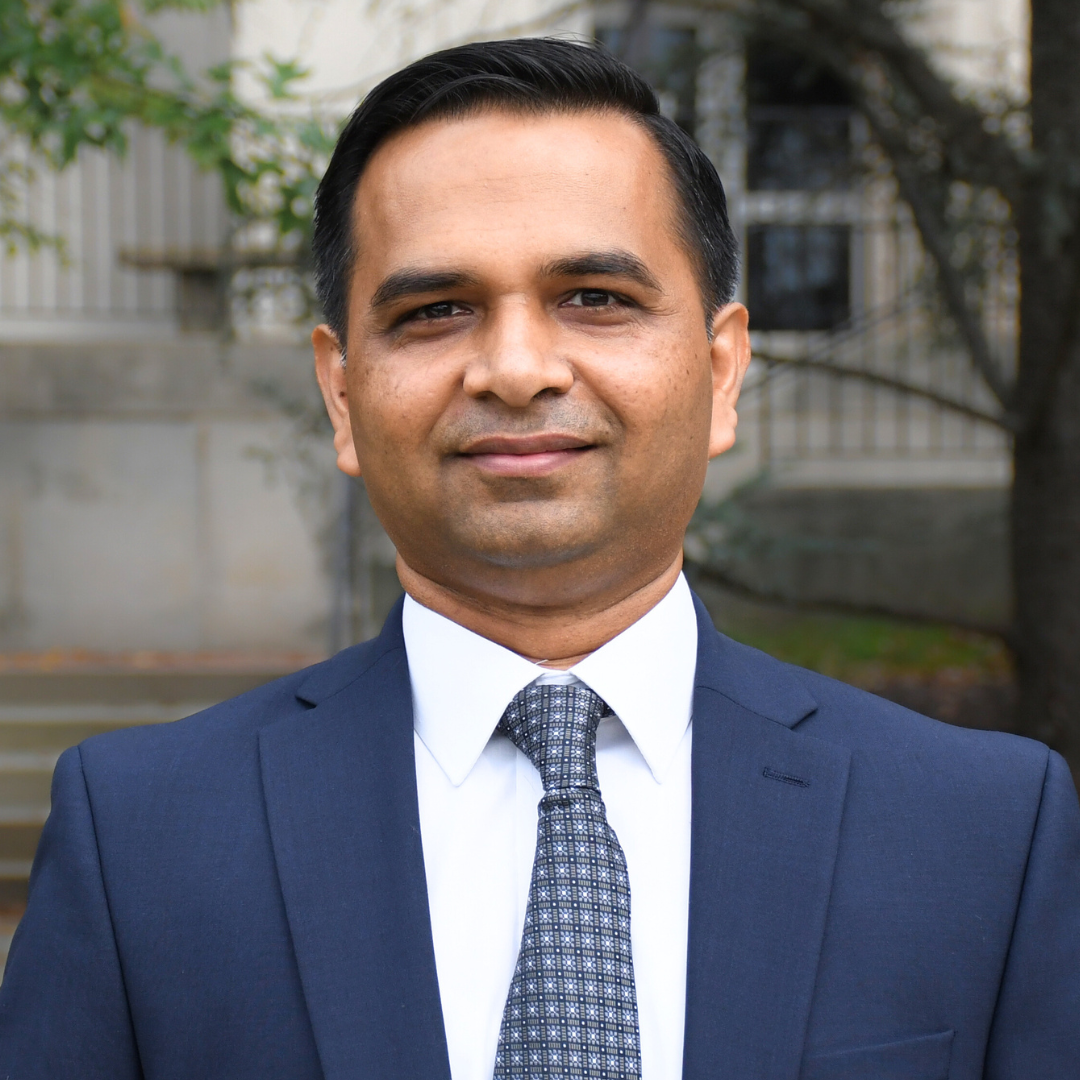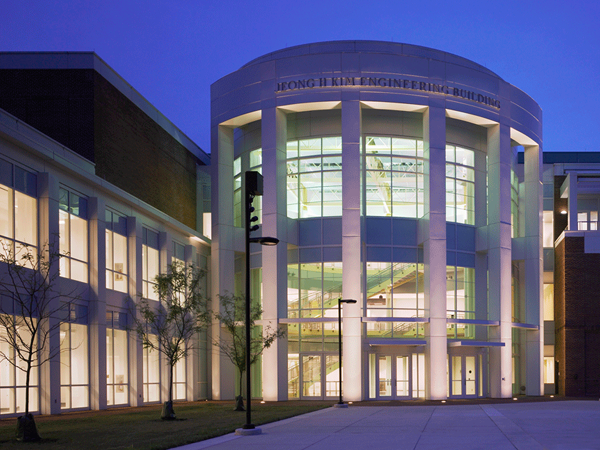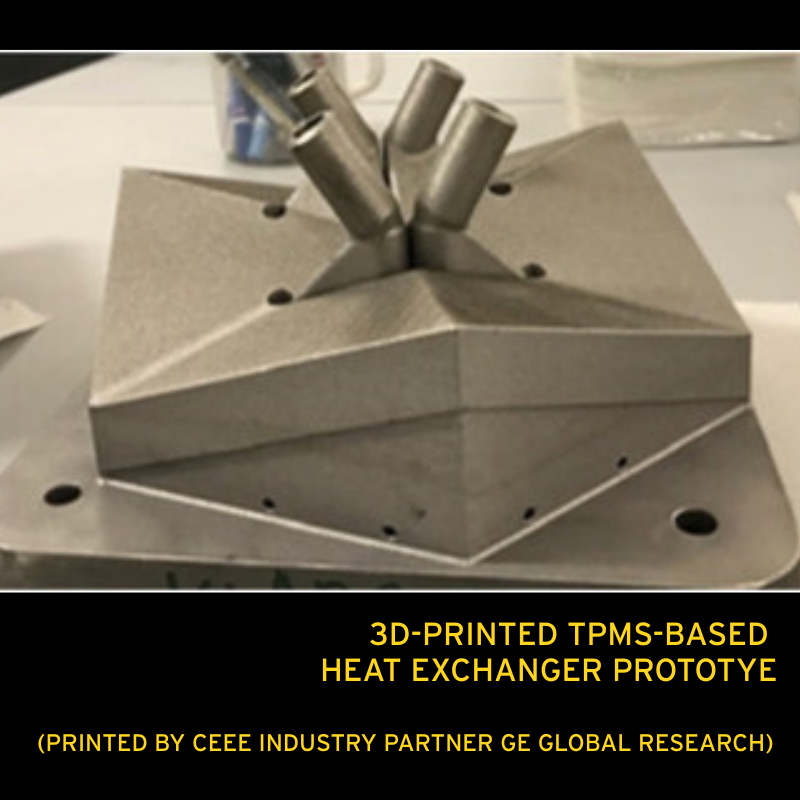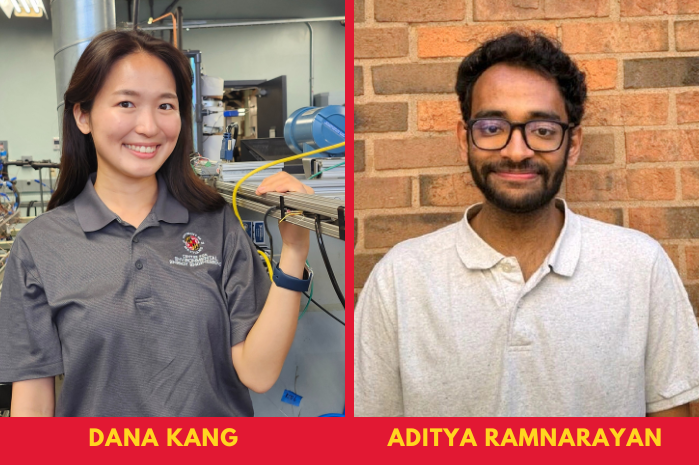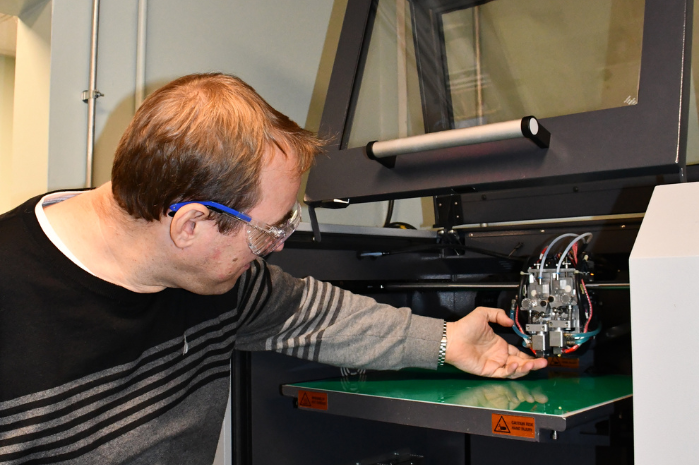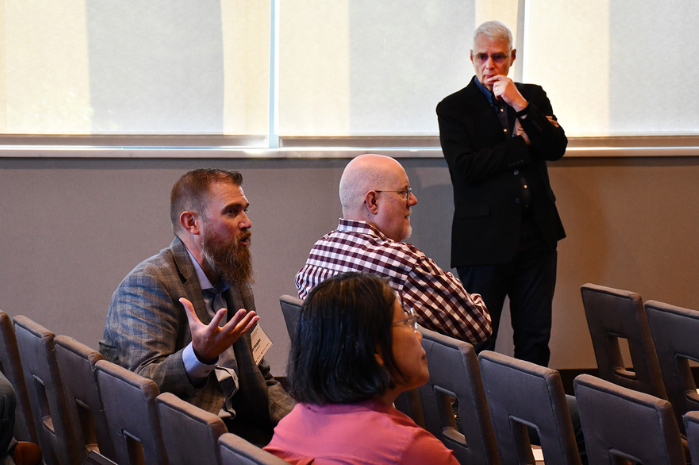News Story
TPTPR Conference Showcased Cutting-Edge Research on Eco-Friendly Refrigerants
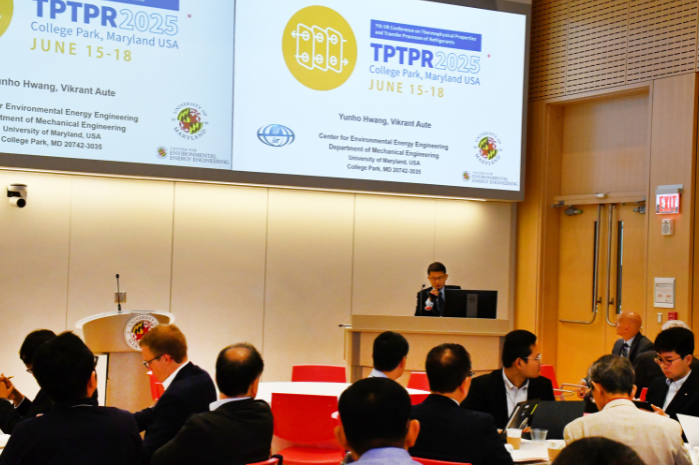
CEEE Research Professor Yunho Hwang welcomed attendees from 14 countries to the 7th IIR Conference on Thermophysical Properties and Transfer Processes of Refrigerants at the University of Maryland, June 15-18, 2025.
As the global community strives toward meeting stringent environmental regulations that require a phasedown of hydrofluorocarbon (HFC) refrigerants, international stakeholders met last month at the University of Maryland (UMD) for the 7th IIR Conference on Thermophysical Properties and Transfer Processes of Refrigerants (TPTPR) to share their latest research on eco-friendly alternatives and related heating, ventilation, air conditioning and refrigeration (HVAC&R) technologies. The UMD Center for Environmental Energy Engineering (CEEE) hosted this globally important conference of the International Institute of Refrigeration (IIR) that brought together stakeholders from 14 countries.
The Kigali Amendment of the Montreal Protocol calls on countries to phase down HFCs by 80-85%. In response, the international community faces the pressing challenge of developing and adopting low-Global Warming Potential (GWP) refrigerants. “TPTPR served as a pivotal platform for sharing our new knowledge to tackle this global challenge,” said CEEE Research Professor Yunho Hwang, who headed the conference’s organizing committee.
Mark O. McLinden, a research chemical engineer for the National Institute of Standards and Technology, opened the conference by framing the big picture. The overarching objective for HVAC&R engineers isn’t to find the optimum low-GWP refrigerant or the optimal cycle configuration, McLinden stressed during his plenary presentation. “Really our goal is to provide refrigeration to accomplish some useful purpose,” including the preservation of food/medicine and effective cooling of our buildings and homes for comfort, productivity and health, McLinden said. He discussed the evolution of refrigerants, including why many fluorine-containing molecules came into popular use, and raised future considerations as we now work to phase down HFCs. While moving away from F-gases is possible, it demands compromises in safety, system design and performance, McLinden posited.
In his plenary presentation, University of Kansas Foundation Distinguished Professor Mark B. Shiflett shared his vision for the Environmentally Applied Refrigerant Technology Hub (EARTH), a new National Science Foundation research center that he leads. “We want to create a circular and sustainable refrigerant cycle,” said Shiflett, who started his career developing refrigerants for DuPont. Due to increased global demand, the number of air conditioners, heat pumps and refrigeration systems in operation is expected to triple to six billion units by 2050. EARTH, which is funded with a renewable five-year $26 million NSF grant, brings together researchers from 16 different disciplines at six universities, including the University of Maryland. The collaborators focus on three main research thrusts: reclamation and repurposing of refrigerants, development of novel and safe refrigerants, and development of energy-efficient systems.
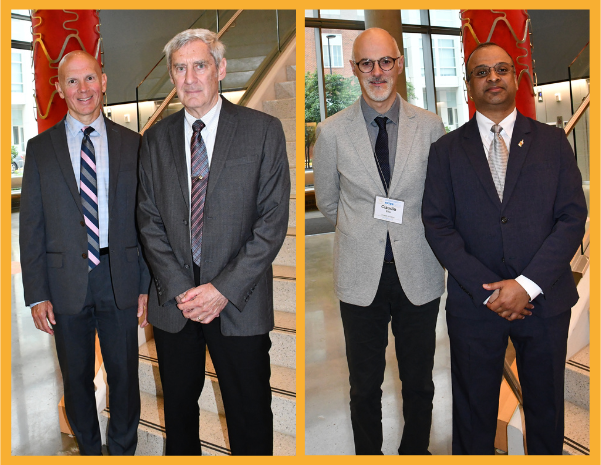
TPTPR plenary speakers included Mark B. Shiflett, Mark O. McLinden, Claudio Zilio and Vikrant C. Aute.
Plenary speaker Claudio Zilio, a full professor in the Department of Management and Engineering at the University of Padova in Italy, discussed the quest for low-GWP refrigerants from a heat transfer perspective. To determine refrigerant performance, researchers must consider the heat transfer and pressure drop performance under condensing and boiling conditions, said Zilio, who shared an overview of an extensive literature review his research group has conducted on this subject. “To minimize the global warming impact of a RACHP [refrigeration, air conditioning, and heat pump] system, the choice of refrigerant should not necessarily be based on a single criterion, like GWP,” Zilio concluded, “but rather should be chosen based on the particular application, keeping into due account the thermodynamic and thermophysical properties.”
For his plenary presentation, CEEE Research Professor and Director Vikrant C. Aute spoke about innovating the next generation of heat exchangers to offer improved HVAC&R performance. “Heat exchangers are key components in thermal systems; they generally account for 20% of a system’s loss,” said Aute, noting that enhancements could lead to energy-efficient, compact heating and cooling technologies that require less refrigerant. He discussed how shape-and-topology-optimization platforms leverage computer algorithms to design new surfaces. “The challenge is: How do we develop predictive capabilities that will get the prototype right the first time?” said Aute, who stressed that there are opportunities for improvement by harnessing the power of machine learning and artificial intelligence. “My vision is that in the next couple of years, we’ll be able to call on a virtual assistant and say, ‘Give me a heat exchanger for . . .,’ and it will produce a design, and then we can 3D print it.”
In total, 42 papers were presented throughout the conference, including three authored by UMD researchers, who shared their latest work on heat transfer models, solid-state elastocaloric cooling and heat pump defrosting technologies. Attendees engaged in two workshops, where leaders in industry and academe shared their insights about the opportunities and challenges of two rising technologies: low-GWP refrigerants and data center cooling fluids; artificial intelligence and machine learning for transport processes.
Conference attendees also toured four of UMD’s engineering laboratories, where they received an insider’s look at how researchers are developing the next generation of eco-friendly HVAC&R technologies.
Conference proceedings of the 7th IIR Conference on Thermophysical Properties and Transfer Processes of Refrigerants will soon be available to purchase from IIR. Conference attendees have been notified about how to access the papers at no cost for a limited time.
Published July 15, 2025
